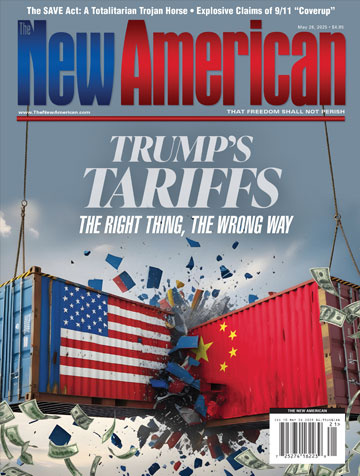
Indian Defense Minister Rajnath Singh lauded his meeting with Russian counterpart Sergey Shoigu on April 28 as “excellent,” as New Delhi hosted defense ministers of the Shanghai Cooperation Organization (SCO).
Both ministers “discussed wide-ranging issues of bilateral defense cooperation,” including the ways in which the Russian defense industry could help New Delhi’s “Made in India” initiative, the Indian Defense Ministry announced in a statement.
Besides, Singh and Shoigu “expressed satisfaction over the continued trust and mutual respect between the two countries,” and reinforced “the unique, long-lasting and time-tested relationship between India and Russia,” the Indian ministry pointed out.
The bilateral meeting happened on the fringes of the SCO defense ministers’ meeting, conducted on April 27 and 28. Moreover, Indian and Russian media sources reported that defense ministry delegations from India, Russia, China, Kazakhstan, Kyrgyzstan, Pakistan, Tajikistan, and Uzbekistan, as well as Belarus and Iran, participated in the meeting.
During the meeting, Shoigu cautioned that Western nations have been mounting “unprecedented pressure” on independent nations to force them to back their global dominance, singling out methods such as “open blackmail, threats, ‘color revolutions,’ coups, and dissemination of blatant disinformation.”
Previously, America had tried to court India by deploying a U.S. national security official, Daleep Singh, to meet with Prime Minister Narendra Modi’s government last March.
In September last year, unnamed U.S. officials revealed to CNN that they had been involved “in deep conversation” with India about its “dependence” on Russia in the military and energy fields, and offered “to help them have options to diversify.”
Amid Western-led sanctions against Russia, trade between New Delhi and Moscow has increased to more than twice the previous volume. Both sides’ agreement to conduct transactions in currencies besides the dollar has also undermined the global influence of the U.S. currency.
Also, in September last year, Modi met with Russian President Vladimir Putin and hailed “unbreakable” bilateral ties, apart from remarks to Putin that it was “not a time for war.”
Unlike the United States and its allies, Modi has refrained from bitterly criticizing Russian actions in Ukraine, choosing to highlight his worries on soaring global food and fuel prices due to the Ukraine conflict instead. Additionally, India has adopted an ambiguous attitude toward the conflict, calling for peace via dialogue and negotiations. Modi’s actions reflect a common view among developing countries that Western nations are focusing on Russia’s role in Ukraine in order to distract the world from pressing cost-of-living and price concerns.
Amid a Western boycott of Russian products and resources, India has continued to procure Russian-made weapons and has ramped up efforts to purchase Russian oil at discount prices, riling Washington in the process.
Since February 2022, various Russian ministers have visited India, including Russian Foreign Minister Sergey Lavrov.
In November, Modi’s top diplomat, Subrahmanyam Jaishankar, met Lavrov in Moscow and praised bilateral ties as “steady and time-tested.”
India and Russia’s ties can be traced back more than a century. India was still under British colonial rule when Russia opened its first consulate there in 1900, in Mumbai. But relations really took off during the Cold War.
“It started out as strategic sympathy for the Soviet Union, in the backdrop of India getting independence from the British. So it’s an anti-colonial experience, anti-imperialism,” says Rajeswari (Raji) Pillai Rajagopalan, a political scientist at the Observer Research Foundation in New Delhi. “And as the Cold War picked up, it became a more anti-West, anti-U.S. sentiment they shared.”
The end of the Cold War didn’t change that. Neither has the Ukraine war. India’s nationalist TV news channels often accuse the United States — rather than Russia — of doing more to ruin Ukraine.
India has one of the fastest-growing economies in the world. (The IMF forecasted a 6.8-percent growth for India this year, compared to just 1.6 percent for the United States.) By 2030, India is forecast to be the third-largest economy in the world, behind the United States and China.
As the world’s third-largest oil consumer, India has had to import most of its oil and gas resources to propel its fast-growing economy. Over the course of a year, Russia’s share of oil purchased by India has surged, with India importing 1.2 million barrels of Russian crude in December, a remarkable 33 times more than a year earlier. An article by The Times of India indicated that Russia’s share of crude oil increased to 28 percent of India’s oil imports — up from just 0.2 percent before February 2022.
In an interview with an Austrian TV channel, Jaishankar hinted that it was hypocritical that wealthier Western nations had asked India not to import oil and gas from Russia.
“Europe has managed to reduce its imports [of Russian gas] while doing it in a manner that is comfortable. At 60,000 euros or whatever is your per capita income, you’re so caring about your population. I have a population at 2,000 dollars [per capita annual income]. I also need energy, and I am not in a position to pay high prices for oil,” Jaishankar said.
An analysis of India’s interactions with Russia would be inadequate if China, its major adversary, is omitted from the equation.
As both India and China have a disputed border that stretches more than 2,000 miles, both sides have witnessed several military clashes in the past few years, including one in June 2020 and one in December 2022.
“You’re already seeing a very close Russia-China relationship emerging, even in the last few years,” said Rajeswari Rajagopalan from the Observer Research Foundation in New Delhi. “So the current Indian approach is, we don’t want Russia to go completely into the Chinese fold. Because for India, China has become the No. 1 national security threat.”




